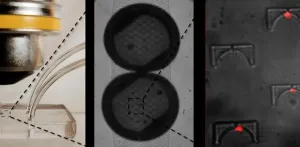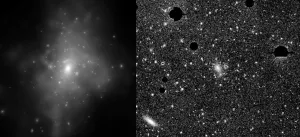The presentations will mark the first time that investigators share translational medicine insights from Lung-MAP, the first large-scale precision medicine trial in lung cancer backed by the National Cancer Institute (NCI), part of the National Institutes of Health, and the first major NCI trial to test multiple treatments, simultaneously, under one "umbrella" design. Since it launched in June 2014, the trial has tested 12 new lung cancer drugs. Lung-MAP has also amassed a scientifically valuable cache of data and biospecimens from 3,021 patients.
"Lung-MAP now has one of the largest collections of data and biospecimens ever gathered for lung cancer," said Roy Herbst, MD, PhD, a Yale University professor and the Lung-MAP study chair. "It's gratifying to see this asset put to use to improve our understanding of lung cancer - and find better ways to treat it."
Results from the Lung-MAP studies will be shared at the 2020 World Conference on Lung Cancer, or WCLC. Organized annually by the International Association for the Study of Lung Cancer, the conference was planned for Singapore but will be held virtually due to the COVID-19 pandemic. The WCLC is the world's largest international gathering of clinicians, researchers, and scientists in the field of lung cancer and thoracic oncology.
Here are summaries of the Lung-MAP presentations to be delivered: Fred Hirsch, MD, PhD (Tisch Cancer Institute, Mount Sinai) will give an oral presentation on work that examined tumor mutational burden - or TMB - and related biomarkers to evaluate whether there were any connections to clinical outcomes of immunotherapy. Using next-generation sequencing data on tissue from 320 patients enrolled in two sub-studies of patients receiving immunotherapy for the first time under the original Lung-MAP master protocol, Hirsch and colleagues evaluated associations between TMB and how long patients lived, and how long they remained cancer-free. They found that higher TMB was significantly associated with better survival rates, and longer periods of time before patients' lung cancer returned or spread. However, expression of the PD-L1 gene - a "brake" on the immune system that contributes to cancer growth - was not associated with better outcomes. "We found TMB to be a good predictor of outcomes to immunotherapy, which operates independently of PD-L1 expression," Hirsch said. "What was interesting in the findings is the emergence of the idea that when we look at TMB to predict outcomes, we should assess TMB as a continuous variable rather than using fixed cut-off values." Hirsch presents this work January 29 (Abstract OA01.04).
David Kozono, MD, PhD (Dana Farber Cancer Institute) will give a mini-oral presentation of an analysis of next-generation sequencing data gathered from the original Lung-MAP master protocol S1400. Patients on that study had tumor tissue samples genetically tested with Foundation Medicine's FoundationOne T5 assay, which sequences 313 cancer-related genes. Kozono and colleagues analyzed Lung-MAP data from 1,672 patients with squamous cell lung cancer and compared it with squamous lung cancer data from The Cancer Genome Atlas. A primary goal: spot novel pairs of genetic alterations in squamous cell lung cancers. These pairs are important because they provide clues about how mutations may contribute to the growth and spread of cancer - information that can be used to create more effective cancer drugs. In the Lung-MAP data, the team uncovered a set of three genes that have never before appeared together - PARP4, NFE2L2, and KEAP1. These findings suggest that all three genes may affect how lung cells respond to oxidative stress, and how treatment resistance may form, and, for the first time, suggest that PARP4 may play role in this key biological pathway. "With novel pairs of mutations, it's 'guilt by association,'" Kozono says. "When you find these, they can hold a real clue about what a gene does. And when you know what a gene does, you have a better understanding of how it might affect responses to a drug. Kozono presents this work January 31 (Abstract MA11.10).
Philip Mack, PhD (Tisch Cancer Institute, Mount Sinai) will give a mini-oral presentation on the feasibility of using plasma circulating tumor DNA (ctDNA) to detect key cancer mutations that can be used to guide therapy in lung cancer, such as alterations in the BRAF, RET, EGFR, KRAS and MET genes. In Lung-MAP, patients who submitted fresh tissue samples for genetic screening also provided plasma samples to measure ctDNA, an approach to cancer detection, characterization, and monitoring known as a "liquid biopsy." Mack and colleagues studied paired samples of both tissue and plasma from 129 Lung-MAP patients. Of those, 52 had critical driver mutations detected in their tissue biopsy samples. The analysis showed that 43 patients also had the same drivers detected in plasma - for an 83 percent sensitivity rate. Of the 77 patients with no drivers detected in their tissue, two patients had drivers detected in ctDNA - for a 97 percent specificity rate. While the ctDNA results were impressive, Mack said they don't yet support a plasma-only approach to genetic screening. While ctDNA testing is faster, cheaper, and much less invasive for patients, tissue samples are still the genetic screening gold standard. Mack said the results do support the use of ctDNA if patients can't - or won't - undergo a second tumor biopsy. "This would speed enrollment onto the trial, and spare patients time, money, and a painful procedure," Mack said. "That's good news." Mack delivers his presentation January 30 (Abstract MA08.10). To see the full abstracts for these and all WCLC presentations, visit the conference website.
Lung-MAP is a groundbreaking public-private partnership, one that includes the NCI and its National Clinical Trials Network (NCTN) including SWOG Cancer Research Network, Friends of Cancer Research, the Foundation for the National Institutes of Health (FNIH), Foundation Medicine, pharmaceutical companies which provided their drugs for the study, and several lung cancer advocacy organizations.
Since the trial is offered at more than 700 U.S. medical centers and community hospitals under the NCTN and the NCI Community Oncology Research Program (NCORP), Lung-MAP makes it easier for patients to receive investigational treatments to fight their non-small cell lung cancer. Lung-MAP is more flexible, and faster, than traditional clinical trial models. Where typical trials require the development of individual studies for each new drug tested, Lung-MAP uses a single "master protocol," which is amended as drugs enter and exit the trial, preserving infrastructure and patient outreach efforts. This makes Lung-MAP more efficient and cost-effective, allowing researchers to quickly answer the critical question: Does this new drug work?
Since its launch, Lung-MAP has registered more than 3,660 patients. Lung-MAP leaders have worked with 10 pharmaceutical partners, in coordination with the FNIH, to launch 13 studies, 12 of which are completed. The trial is addressing questions about the efficacy of immunotherapies and immunotherapy combinations and the validity of new biomarkers. The trial has also produced critical insights into the conduct of large-scale precision medicine trials, including tissue sampling and banking, genetic screening, and patient communication.
INFORMATION:
About the Foundation for the National Institutes of Health
The Foundation for the National Institutes of Health creates and manages alliances with public and private institutions in support of the mission of the NIH, the world's premier medical research agency. The Foundation, also known as the FNIH, works with its partners to accelerate biomedical research and strategies against diseases and health concerns in the United States and across the globe. The FNIH organizes and administers research projects; supports education and training of new researchers; organizes educational events and symposia; and administers a series of funds supporting a wide range of health issues. Established by Congress in 1990, the FNIH is a not-for-profit 501(c)(3) charitable organization. For additional information, please visit fnih.org.
About Friends of Cancer Research
Friends of Cancer Research (Friends) drives collaboration among partners from every healthcare sector to power advances in science, policy and regulation that speed lifesaving treatments to patients. For more information, please visit http://www.focr.org.
About SWOG Cancer Research Network
SWOG was founded in 1956, and is a member of the National Cancer Institute's National Clinical Trials Network and the NCI Community Oncology Research Program, making it part of the oldest and largest publicly funded cancer research network in the United States. SWOG has over 12,000 members in 47 states and six countries who design and conduct cancer prevention and treatment trials. SWOG trials have led to the approval of 14 cancer drugs, changed more than 100 standards of cancer care, and saved more than 3 million years of human life. Learn more at swog.org.





